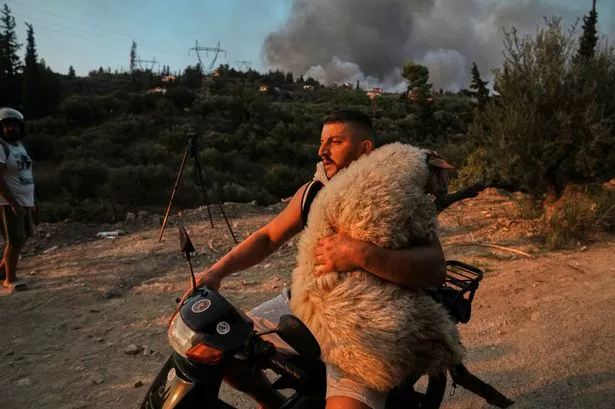The European Union has seen more than one million hectares scorched by wildfires for the first time in 2025 since records began in 1996, according to official data
Wildfires have torched more than one million hectares across countries in the European Union this year, making 2025 the worst on record.
The data shows records have also been broken for the amount of Co2 and other air pollutants entering the atmosphere, a full month before the fire season ends. So far this summer deadly infernos have emptied out villages and forced farmers to become firefighters, engulfing four times as much land this year as the average for the same period over the past two decades, according to official data.
The European Forest Fire Information System (Effis), which goes back to 2003, shows 1,015,024 hectares have burned this year – breaking the previous record of 988,544 hectares that was set in 2017, with weeks of dangerous fire weather still to come.
The destructive blazes have also pumped out 37m tonnes of carbon dioxide – about as much as the yearly CO2 emissions of Portugal or Sweden, each home to 10 million people. The fires have also broken records for this time of year for nine other air pollutants, including fine particulates known as PM2.5 that experts say make wildfires far more deadly than previously thought.
Cristina Santín Nuño, a fire scientist at the Spanish National Research Council, said the “perfect conditions” for big and dangerous wildfires were happening more and more because of changes in the climate and how people used the land. “It is sad and scary – my home region is burning right now – but not surprising, really,” she said.
Wildfires ripped through swathes of southern Europe this month as a heatwave pushed temperatures above 40C across much of the Mediterranean and the Balkans. The flames are known to have killed more than a dozen people but scientists say the hidden death toll is likely to be far greater.
A study published in the Lancet in December blamed wildfire smoke for 111,000 deaths a year in Europe, including Russia, between 2000 and 2019. On Tuesday, the EU’s Copernicus atmosphere monitoring service found that “unprecedented” fire activity this year had driven Spain’s wildfire emissions up to the highest annual total in the 23 years since records began.
Fumes from fires across the Iberian peninsula were made worse by smoke drifting across the Atlantic from Canada, which has also burned badly in recent weeks. Wildfire emissions from Spain and Portugal in August have been “exceptional”, said Mark Parrington, a scientist with Copernicus.
“The large quantities of smoke – and especially PM2.5 – released into the atmosphere have resulted in severely degraded air quality locally, and further afield across the Iberian peninsula and parts of France.”
Effis said on Tuesday that fire weather conditions were expected to ease across most of southern Europe this week, but added that “very high to very extreme” anomalies were expected in north-west Europe.
Santín Nuño said a “catastrophic” wildfire season was unlikely every year, but that each year the probability of breaking records was increasing.
It is “highly probable” the record in 2025 will be broken again in a few years, she added. “This is a new reality. And the sooner we realise it, and take action to be more resilient to these types of wildfires, the better.”




